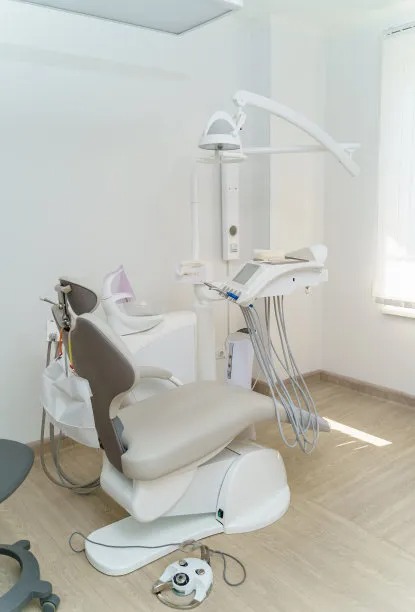An Emotional Journey Through the Process of Extracting a Tooth and Its Aftermath for Both Patient and Dentist
Summary: Extracting a tooth is often viewed as a routine dental procedure; however, it is an emotional journey for both the patient and the dentist. Patients usually experience a whirlwind of feelings ranging from anxiety and fear to relief and empowerment as they finally confront their dental issues. On the other hand, dentists encounter their own emotions, including compassion and responsibility towards their patients’ well-being. This article delves into the emotional aspects of tooth extraction, discussing the anticipation and fear during the procedure, the challenge of managing that fear, the relief and healing that follow, and the lasting impressions left on both the patient and the dentist. By examining these elements, we gain valuable insight into the personal experiences involved in a tooth extraction, highlighting the profound bond created through the process.
1. Anticipation and Anxiety Before the Procedure

Before the tooth extraction, patients often feel a mix of anticipation and anxiety. Many head to the dentists office with worries about pain, potential complications, and the overall experience. The waiting room can feel like a pressure cooker, with each tick of the clock heightening the emotional turmoil. Thoughts of "What if it hurts?" and "Will I be okay?" swirl in their minds, making the anticipation even more intense.
For many patients, previous negative experiences with dental work can amplify these fears. The sounds of dental tools and the sights of sharp instruments can trigger memories of discomfort and panic. It is not uncommon for patients to find themselves questioning whether they should have done more to avoid the extraction in the first place, creating a layer of regret that compounds their anxiety.
As the dentist walks in to discuss the procedure, patients often search for reassurance. They may express their fears, and how the dentist responds can significantly impact the emotional climate of the room. A compassionate, understanding dentist can help to alleviate some of the dread, establishing a rapport that helps ease the patients nerves and fosters trust.
2. The Challenge of Managing Fear During Extraction
As the extraction procedure begins, the focus shifts from anticipation to immediate concerns as the patient faces their fears head-on. The dentist and their team work to create a calming environment, using distractions and informative dialogue to help ease the patients tension. For instance, explaining each step can help the patient feel more in control and lessen the fear of the unknown.
Moreover, the use of anesthesia plays a critical role during this period. Patients may have varying degrees of comfort with the numbing agents or sedatives utilized, which can either help them to relax or add to their anxiety if unsure about the process. Here, the human connection between patient and dentist becomes essential. A gentle touch and familiar voice can make a world of difference in ensuring that the patient feels supported throughout the extraction.
For dentists, this moment is one filled with responsibility and empathy. They are acutely aware of the emotional weight the procedure carries for their patient. As they wield their tools, their own feelings of compassion and the desire to provide comfort are palpable. They must balance the technical execution of the extraction with the emotional support the patient needs, creating a dynamic space where both parties share in the experience.
3. Relief and Healing Following the Extraction
Once the tooth has been extracted, a sense of relief often washes over the patient. The moment they realize that their fears were unfounded and that the painful or troublesome tooth is no longer there can be liberating. Some patients even experience a rush of elation, almost as if shedding a burden they did not know they were carrying.
However, this relief can be accompanied by physical discomfort and the realization that healing takes time. Patients are faced with new challenges, such as post-operative care and managing any pain that follows. The emotional journey continues as they navigate their recovery, relying on the dentist for guidance and reassurance during the healing phase. Clear communication about what to expect becomes crucial during this time.
For dentists, observing the relief in their patients is immensely rewarding. They often take pride in their role not just as a healthcare provider but as a crucial partner in the patients journey towards improved oral health. The feedback from satisfied patients can be a motivating factor, reinforcing the reason why they chose this profession and reminding them of the importance of empathy in their interactions.
4. Lasting Impressions and Bonds Created
The experience of tooth extraction can leave lasting impressions on both patients and dentists. For patients, the relief often transforms into an appreciation not just for the procedure but also for the dentists skill and empathy. Many may leave with a heightened sense of respect for dental professionals, recognizing how integral they are to one’s well-being.
Dentists, too, take away profound lessons from these interactions. Each patients unique emotional journey contributes to their understanding of human emotions and the importance of providing both medical and emotional support. This shared experience fosters a bond that can transcend the clinical aspects of dental care, allowing for the development of long-term patient relationships.
Overall, both parties emerge from the experience with a richer understanding of empathy and the human condition. Patients gain insights into the importance of addressing oral health proactively, while dentists grow not just as professionals, but as compassionate caregivers.
Summary:
The emotional journey of extracting a tooth encapsulates various facets for both the patient and the dentist, ranging from anxiety and anticipation to relief and lasting relationships. The experience is as much about the emotional connection forged as it is about dental health. Through the challenges faced before, during, and after the procedure, both parties learn vital lessons about support, compassion, and the importance of human connection in clinical settings.
This article is compiled by Vickong Dental and the content is for reference only.


